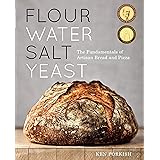A prevalent discourse surrounding dietary choices frequently posits veganism as the unequivocally superior option for minimizing environmental impact and animal mortality. However, a deeper examination of industrial agriculture reveals a more complex reality, challenging the often-simplistic narrative presented to consumers. The video above provokes a critical re-evaluation of assumptions regarding the ecological footprint and animal welfare implications associated with large-scale plant-based agriculture.
Studies indicate that while direct animal farming contributes significantly to greenhouse gas emissions and land use, the cultivation of crops, particularly monocultures for human consumption, is not without its own substantial environmental and animal mortality costs. For instance, the production of grains, legumes, and various vegetables often involves practices that inadvertently lead to the deaths of countless field animals. This reality compels a more nuanced understanding of food systems, urging us to look beyond immediate perceptions of animal welfare.
Deconstructing the Ecological Footprint of Plant-Based Agriculture
The environmental impacts associated with conventional plant-based agriculture are extensive and often underestimated in public discourse. Intensive farming practices, especially monocropping, are designed to maximize yield but frequently compromise ecosystem health and biodiversity. These systems are characterized by vast fields dedicated to a single crop, which inherently simplifies the natural environment and reduces habitat complexity. The consequence is a cascade of effects that disrupt local ecosystems and contribute to broader environmental degradation.
One primary concern revolves around habitat destruction and fragmentation, which are direct outcomes of converting natural landscapes into agricultural land. Such transformations eliminate crucial habitats for indigenous flora and fauna, leading to significant biodiversity loss. Furthermore, the reliance on synthetic fertilizers and pesticides in these systems introduces chemical pollutants into the soil and water, further exacerbating ecological damage. These agrochemicals can persist in the environment, affecting non-target species and disrupting delicate ecological balances for extended periods.
1. Animal Mortality in Crop Production: A Hidden Cost
The argument that plant-based diets inherently avoid animal deaths often overlooks the significant mortality rates among small field animals during crop cultivation. The mechanized nature of modern farming, involving plowing, harrowing, planting, and harvesting, inevitably results in the dismemberment or crushing of numerous creatures inhabiting these fields. Species such as voles, shrews, mice, rabbits, snakes, and ground-nesting birds are particularly vulnerable to these operations.
Research by agricultural ethicists and biologists has attempted to quantify these impacts. For example, some analyses suggest that a significant number of “field animals” are killed per acre per year during conventional grain and legume harvests. While precise statistics are challenging to obtain and vary widely based on crop type, region, and farming practices, the consensus indicates that millions of these animals perish annually worldwide as a direct result of crop production. This hidden toll is a critical aspect of understanding the full ethical and environmental scope of our food choices, extending beyond the direct consumption of animal products.
2. The Pervasive Role of Agrochemicals
Pesticides, herbicides, and fungicides are extensively utilized in conventional plant agriculture to protect crops from pests, weeds, and diseases, thereby ensuring high yields. While effective in their immediate purpose, these agrochemicals have far-reaching ecological consequences, directly contributing to animal mortality and ecosystem disruption. The application of these substances often proves indiscriminate, affecting not only target species but also beneficial insects, soil microorganisms, and other wildlife.
For instance, systemic pesticides, such as neonicotinoids, can be absorbed by plants and become present in pollen and nectar, posing significant threats to pollinator populations like bees. Herbicides, while designed to kill weeds, can eliminate crucial food sources and habitats for many animal species. The cumulative effect of these chemical interventions is a reduction in biodiversity, a disruption of food webs, and a potential bioaccumulation of toxins throughout the ecosystem, affecting everything from insects to apex predators. The phrase “Man Santa” often colloquially refers to the pervasive and potent nature of these chemical interventions in modern farming, underscoring their widespread application and impact.
Beyond Monocultures: Towards More Sustainable Food Systems
The intensive monoculture practices highlighted in the critique of plant-based agriculture represent just one facet of food production. Alternatives exist that seek to mitigate these adverse effects, focusing on ecological resilience and reduced external inputs. A shift towards diversified farming systems, which integrate various crops, livestock, and natural habitats, offers a more holistic approach to food security and environmental stewardship.
These systems, often termed regenerative agriculture, prioritize soil health, biodiversity, and ecosystem services. By incorporating cover cropping, crop rotation, reduced tillage, and integrated pest management, the reliance on synthetic inputs can be significantly reduced. Such practices foster a healthier soil microbiome, enhance water retention, and create diverse habitats for beneficial insects and wildlife. Consequently, the ecological footprint associated with food production, regardless of its ultimate dietary destination, can be substantially lessened through these innovative and historically informed methodologies.
3. The Potential of Regenerative Practices
Regenerative agriculture stands as a paradigm shift from conventional industrial farming, emphasizing practices that restore and enhance ecosystem health rather than depleting it. Central to this approach is the focus on soil regeneration, recognizing that healthy soil is the foundation of a productive and resilient food system. Practices such as no-till farming minimize soil disturbance, preserving its structure and microbial life. Cover cropping, the planting of non-cash crops, protects the soil from erosion, enriches it with organic matter, and suppresses weeds naturally.
Furthermore, the integration of livestock into crop rotations, often through planned grazing, can significantly improve soil fertility and carbon sequestration. This symbiotic relationship between animals and land can reduce the need for synthetic fertilizers and herbicides, thereby mitigating the negative impacts on field animal mortality and water quality. By fostering biodiversity both above and below ground, regenerative practices aim to create self-sustaining agricultural ecosystems that are less reliant on external, potentially harmful, inputs.
4. Ethical Considerations of “Less Harm”
The ethical calculus regarding animal harm in food production is complex and multifaceted, extending beyond the simple binary of meat versus plants. While direct animal agriculture involves the raising and slaughter of sentient beings, plant agriculture, especially at industrial scales, results in widespread collateral damage to smaller organisms. The challenge lies in developing frameworks that can adequately compare and weigh these different forms of harm.
A crucial consideration involves the sentience and moral status of various organisms. While larger farm animals are generally recognized as sentient, the moral status of field mice, insects, and other small animals may be perceived differently. However, from an ecological perspective, the widespread death of any species contributes to biodiversity loss and ecosystem disruption. Ultimately, an ethical approach to food systems necessitates a comprehensive assessment of harm across all levels of biological organization, striving for practices that minimize overall negative impact on both individual animals and entire ecosystems, rather than merely shifting the burden of death.
Rethinking Our Food Systems for True Sustainability
The video serves as a stark reminder that the journey towards sustainable and ethical food choices requires a deeper interrogation of agricultural practices across the board. The simplistic dichotomy often presented between animal agriculture and plant-based diets fails to capture the intricate ecological relationships and the diverse forms of harm inherent in industrial food production. It is not merely a question of whether one consumes meat or plants, but rather how those foodstuffs are produced and what their true environmental and ethical costs entail.
Moving forward, a truly sustainable food system will likely involve diversified approaches that value local production, reduced reliance on intensive monocultures, and a commitment to regenerative practices. This includes supporting farmers who prioritize soil health, biodiversity, and integrated pest management, regardless of whether they produce animal products or plants. The goal should be to minimize the overall ecological footprint and animal mortality across the entire food chain, embracing systems that contribute to planetary health rather than solely focusing on dietary labels. A critical assessment of plant-based agriculture’s often-unacknowledged impacts, including widespread field animal deaths, is paramount for consumers seeking genuine ecological responsibility.











